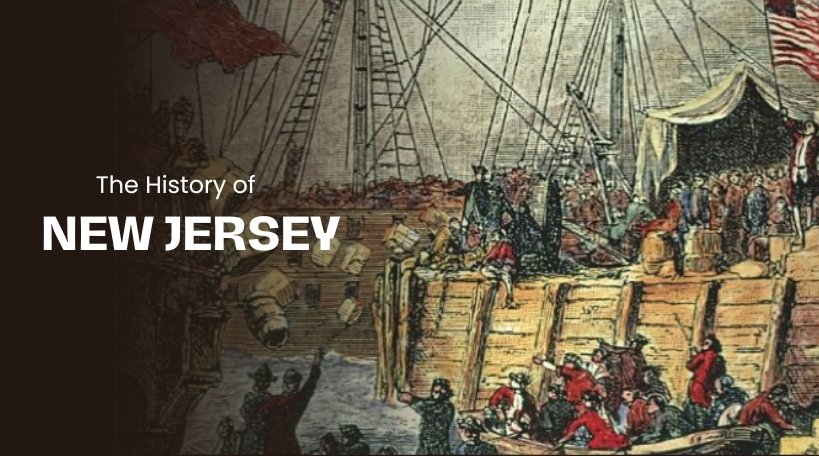New Jersey, one of the original thirteen colonies, holds a significant place in American history. The state’s location between New York and Pennsylvania made it a crucial crossroads for the early colonies, especially during the American Revolutionary War. This article delves into New Jersey’s history, from its Native American roots to its evolution into a modern state.
Early Native American Inhabitants
Before European colonization, New Jersey was home to the Lenni-Lenape, a Native American tribe that thrived in the region for thousands of years. The Lenape lived in small communities and were skilled hunters, fishermen, and farmers. They practiced a matrilineal system, with power passed down through the female lineage. The tribe was part of the larger Algonquian-speaking group, sharing cultural and linguistic ties with neighboring tribes.
European Exploration and Colonization
In 1609, the area now known as New Jersey was explored by Henry Hudson, an English explorer working for the Dutch East India Company. Hudson’s exploration led to the Dutch establishing a claim to the region, and by 1624, the first European settlement, New Netherland, was founded in what is now Jersey City.
By the mid-1600s, the British challenged the Dutch for control of the area, and in 1664, the English seized New Netherland. King Charles II granted the land to his brother, the Duke of York, who later gave portions of it to Lord John Berkeley and Sir George Carteret. The colony was divided into East Jersey and West Jersey, but the two were reunited as a single royal colony in 1702. The colony was named “New Jersey” after the Channel Island of Jersey, where Carteret had been born.
New Jersey in the American Revolution
New Jersey played a pivotal role during the American Revolutionary War due to its strategic location between the Continental Army’s northern and southern operations. The state was the site of over 100 battles, earning it the nickname “The Crossroads of the Revolution.” One of the most famous events was George Washington’s crossing of the Delaware River in 1776, leading to the Battle of Trenton, a crucial victory for the American forces.
In 1787, New Jersey became the third state to ratify the U.S. Constitution. The state’s leadership in ratifying the Bill of Rights in 1790 solidified its place in early American political development.
Industrial Revolution and Growth
By the 19th century, New Jersey began transforming from a primarily agrarian society to an industrial powerhouse. Its proximity to major cities like New York and Philadelphia, coupled with the development of transportation infrastructure, such as canals and railroads, spurred rapid industrialization. Paterson, known as the “Silk City,” became a leading industrial hub, particularly in textiles.
New Jersey’s strategic location also made it a center for transportation and commerce. Ports, railroads, and highways crisscrossed the state, facilitating the movement of goods and people, which contributed to its economic growth.
The 20th Century: Immigration, Innovation, and Urbanization
The turn of the 20th century brought waves of immigrants to New Jersey, particularly from Southern and Eastern Europe. Cities like Newark, Jersey City, and Paterson swelled with immigrant populations, contributing to the state’s diverse culture and economy.
New Jersey was also a hotbed for innovation during this time. Thomas Edison, one of the world’s greatest inventors, established his laboratory in Menlo Park, where he developed the electric light bulb, the phonograph, and many other inventions that transformed modern life. The state’s proximity to research institutions and industries led to further advancements in areas like telecommunications, pharmaceuticals, and transportation.
The mid-20th century saw the rise of suburbanization, fueled by the construction of the Garden State Parkway and New Jersey Turnpike. These highways allowed for easier commuting between New Jersey and New York City, transforming towns into suburban communities and reshaping the state’s demographics.
Modern Day New Jersey
In the 21st century, New Jersey remains a diverse and economically significant state. Its industries have shifted from manufacturing to technology, finance, pharmaceuticals, and telecommunications. Despite being one of the most densely populated states, New Jersey boasts an extensive network of parks and protected areas, from the Pinelands to the beaches along the Jersey Shore.
The state’s political importance remains high, often serving as a bellwether in national elections. Its cultural contributions, from Bruce Springsteen’s music to its iconic diners and sports teams, have made New Jersey a unique and influential part of the United States.
Conclusion
New Jersey’s history is a rich tapestry woven with Native American heritage, European colonization, revolutionary struggle, industrial might, and cultural innovation. As a state that has always been at the crossroads of American history, New Jersey’s evolution reflects the broader trends of the nation, from its founding to its modern-day role as a hub of diversity and progress.

